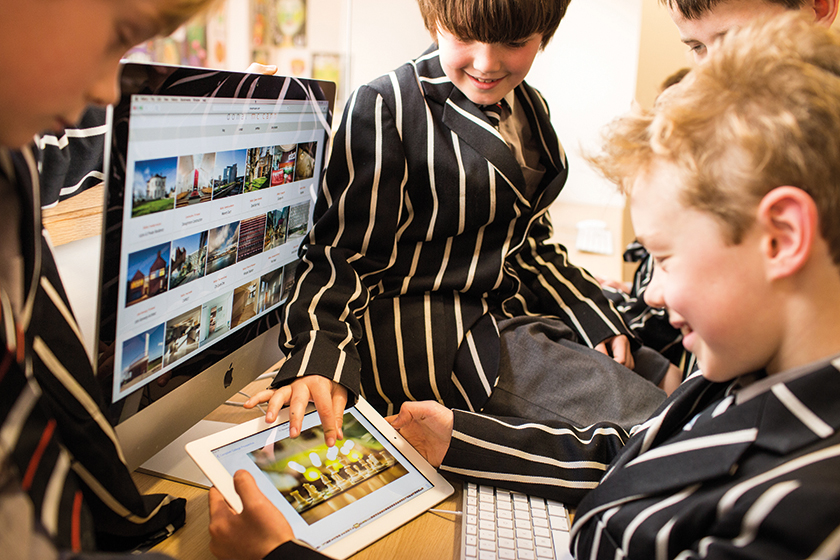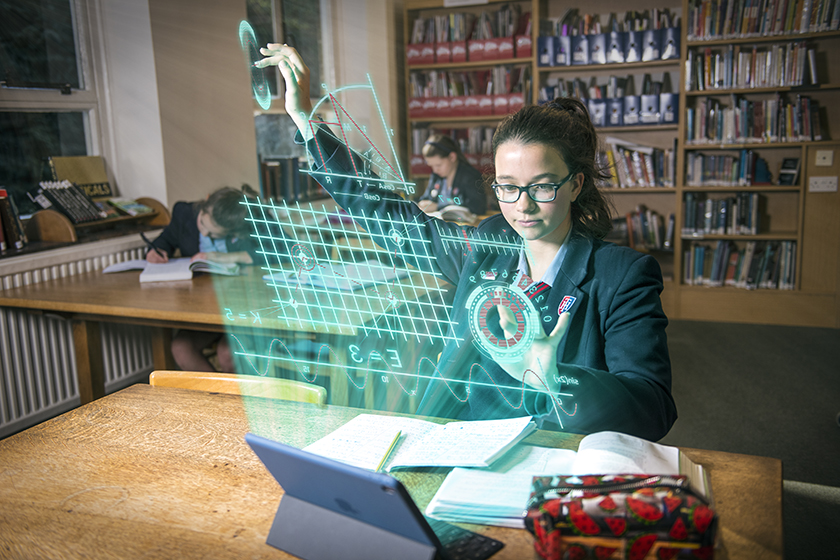The Pros and Cons of Technology in the Classroom
By
8 years ago
Is it a case of goodbye Mr Chips and hello Mr Micro-chips? Max Davidson asks what role technology has to play in today's schools

Max Davidsons debates the benefits and disadvantages of increased technology in the classroom.
At school, as in the world at large, technology can be a good servant but a bad master. Are weekly progress reports an altogether good thing? How long before they are invited to view live video streams from the classroom? It’s a lively and important debate.
The information age
‘Too much information’, it has become one of the catchphrases of the age. And there are probably more than one or two parents of children at boarding school who give a wry smile when they hear it.
When they were at school, the information their parents received about their wellbeing and academic progress was comically constricted. Perhaps a quick telephone call if their daughter had got mumps. End-of-term reports that were so laconic they were completely inscrutable. What on earth did the maths master mean by ‘quite satisfactory’? Was there a veiled hint that little Emma was wobbly on her two-times table?
Now, thanks to a seismic change in educational attitudes and technological advances, parents can keep tabs on their children like never before. They can live thousands of miles away, in New York or Hong Kong, and still feel a sense of connection.
This can take on myriad forms, from head teachers’ blogs to progress-trackers, depending on how schools choose to take advantage of new technologies.
Benefits of technology at school
-
Sharing
Bedales, once a by-word for its relaxed approach to education and almost ostentatious in its disdain for life in the fast lane, now frolics about in cyberspace like a teenager. The school’s Twitter feed is an exuberant, freewheeling succession of feel-good images: kids at a pig farm, kids at dance classes, kids planting ox-eye daisies, kids debating whether towns should put up Christmas lights. What parent would not appreciate these glimpses into their children’s world? The headmaster of Bedales – in common with many of his peers – writes a weekly blog.
-
Safety
St Mary’s Ascot has borrowed finger-vein scanning, a Hitachi invention also used by banks for internet banking, and incorporated the technology into school life, whether it is class registration or at the refractory first thing in the morning.
-
Learning
Every month seems to bring exciting new innovations, introducing a whole host of new technology tools into the classroom.
Best tech tools for teachers

Tudor Hall
How far new technology has been an aid to learning in the classroom is debated. It has certainly spawned a plethora of new teaching tools:
-
Apps
Daydream Education‘s multi-platform app, Maths Tutor, incorporates a huge variety of tutorials, interactivities and real-life scenarios. The three Rs, reading, writing and arithmetic, drummed into generations of pupils, are becoming much more fun.
-
Robotics
St Clement Danes School in Hertfordshire was one of the first schools to recruit funky little robots called Meccanoids. The new members of staff could revolutionise computing and science lessons.
-
Progress-trackers
At Bryanston, another school at the vanguard of the technological revolution, parents simply have to log in to the school’s website to access their child’s eChart, an academic progress-tracker.
-
Parent portals
Password-protected parent portals are now a common feature on school websites. And the best of them do not just offer access to information, but take into account the fact that the people who use it, i.e. parents, are often busy professionals to whom time is precious.
Through My School Portal, all parents and guardians of LVS Ascot‘s 800 plus pupils, across its junior, secondary and sixth form schools have secure 24-hour access to personalised data for their children. Parents can access emails, reports, attendance records, timetables and sports fixtures. Importantly, moving all personal data to a restricted user-only portal ensures that only the right people see the right information.
Meanwhile at St Helen’s, Northwood, in the heart of the North London commuter belt, Microsoft SharePoint has been used to ensure that parents receive only the information of immediate relevance to their child.
Negatives of technology in the classroom
-
Over monitoring
One interesting offshoot of the technological revolution, of interest to parents, is the enhanced capacity to measure academic progress. How is your child doing in maths, English and other subjects vital to their chances of getting into a good university? Parents used to have to wait for parents’ evenings or end-of-term reports. Now, with schools at the cutting-edge of technology, updates come far more frequently. Helicopter parents are naturally thrilled with their new toys but are their children equally thrilled? Schools have to strike a reasonable balance between monitoring progress and neurotic micromanagement?
-
Privacy
Children’s safety remains paramount, for parents and teachers alike – although how best to protect children while they are at school is a moot point. But in 2015, the Independent Schools Inspectorate raised concerns about the extensive use of CCTV cameras at one independent school intruding on pupil’s privacy.
-
Social media
Every headteacher in the land is alert to the dangers of cyber-bullying. They are also alert to the danger of children becoming overly-dependent on their smart phones. Some schools have even employed ‘virtual barriers’ to restrict access to social media on the school premises. There is an ongoing battle to combat some of the excesses of the internet age.
The verdict
The debate about technology in the classroom can only intensify as the technological revolution gathers pace. Computerising the classroom can be a mixed blessing. In September 2015, a global report by the Organisation for Economic Co-operation and Development (OECD) found that, contrary to perceptions, investing heavily in computers and classroom technology did not improve pupils’ performance. Technology ‘had raised too many false hopes,’ warned the OECD’s education director, Andreas Schleicher.
‘Today’s parents take it for granted that schools are going to be technologically up-to-date,’ says Susan Hamlyn, editor of the Good Schools Guide.
‘There is almost as much competition to produce the best web portals as there is to have the best facilities for sports and the performing arts. But more is not always better. The most successful schools tend to be the ones who embrace new technology, but in a sensible way.’
READ MORE: How Can I Limit Screen Time at Home?



